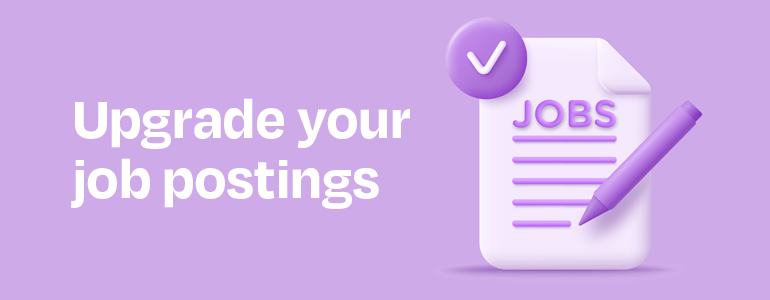Upgrade Your Job Postings with CareerFinder
Crafting job descriptions can be complicated, especially for emerging tech roles that are still evolving. And there are no standard requirements to help define each role.
“Employers aren’t certain about what they want done—they just know they need somebody to do this, and they don’t know what ‘this’ necessarily is,” says Randy Purse, Senior Cybersecurity Advisor for Rogers Cybersecure Catalyst.
TECHNATION’s CareerFinder Job Descriptions tool (a database with more than 65 jobs) is a starting point for employers to ensure they hire the right candidate. Using the tool, you can search by skills or job titles that you want to hire for, then download sample job postings to help create your own.
“I know we all struggle with time, and we fumble our way through things that we’re not sure of,” Purse says. “A single source, a single point of information for [writing job descriptions] is very helpful.”
Purse works primarily in learning and development and has seen firsthand mismatches between jobs and new hires. This leads to low retention rates in emerging tech roles—either the candidate doesn’t fit the job, or the job was misrepresented. High turnover can be costly for companies when considering the time and resources that go into the onboarding process.
“For a little bit of extra effort to make sure there is a valid, accurate job description for the role, they’re going to save a ton of money if they don’t have to hire somebody again,” Purse says.
How to Write a Job Description
Often the first thing job seekers look at is salary and benefits, Purse says. Then, the candidate looks at how well they will fit the job, so a good description of what the job entails, rather than just a list of skills required, matters.
Before diving into the description itself, employers need to know and define what type of person they are looking for, Purse says. Organizations should perform a role-based needs assessment by outlining the expectations of the role, what tasks the new employee will be responsible for, how they will interoperate with others and what skills and attributes they should have.
Once that’s complete, employers can go to the CareerFinder Job Descriptions tool. You can view all the roles at once or select a category: cybersecurity, artificial intelligence, hybrid tech roles or other tech roles. You can also search the database by looking up skills or typing a keyword of the job title you want to hire for.
CareerFinder’s Job Title Heatmap can also help employers put together a job posting. It provides real-time information of tech jobs available across Canada, giving you a sense of what other employers are looking for. The Heatmap lists relevant skills, shows which provinces and territories have job openings and gives an estimated salary range, all of which are helpful in putting together a job description.
While these tools are incredibly helpful in showing what the market is saying right now, Purse cautions it’s not quite as simple as copy and pasting word-for-word from the Job Descriptions tool. An exact description in the database may not be applicable to a particular organization’s sector or technological maturity, for example. That’s why the role-based needs assessment is so important. Then you can use CareerFinder to learn what sorts of jobs and duties will be a good match for the role you want to fill.
“It’s primarily a refinement process of taking the information you see and refining it to your own organization,” Purse says. “But, by having access to CareerFinder, you get insights that you wouldn’t otherwise have.”
Developing the Future Workforce
Besides putting together job descriptions, Purse says people like him use CareerFinder for workforce development. He can go in and look at desired skills and roles, then can apply that information to shape education and training to support what employers are demanding.
Those working on a tech job description who feel overwhelmed should know they’re not alone and that there are resources to help, like CareerFinder’s Job Descriptions tool and Job Title Heatmap, Purse says.
“It’s not surprising, and it’s not a huge problem either, because we can tackle this through various tools through information assets that we have available.”

